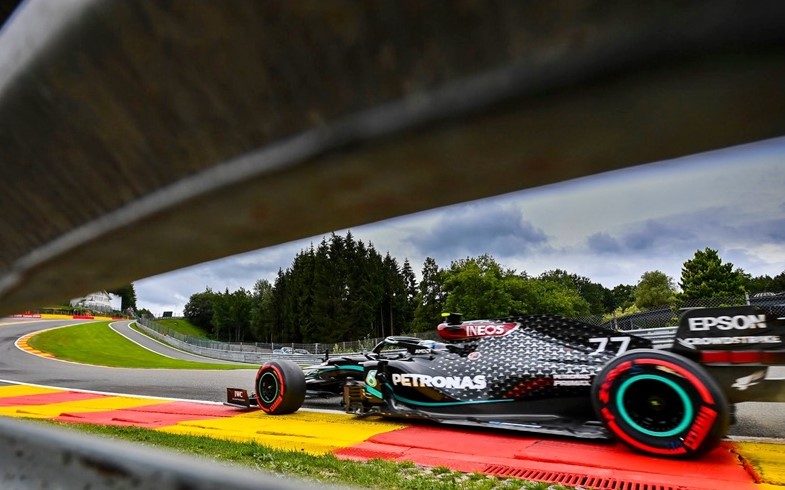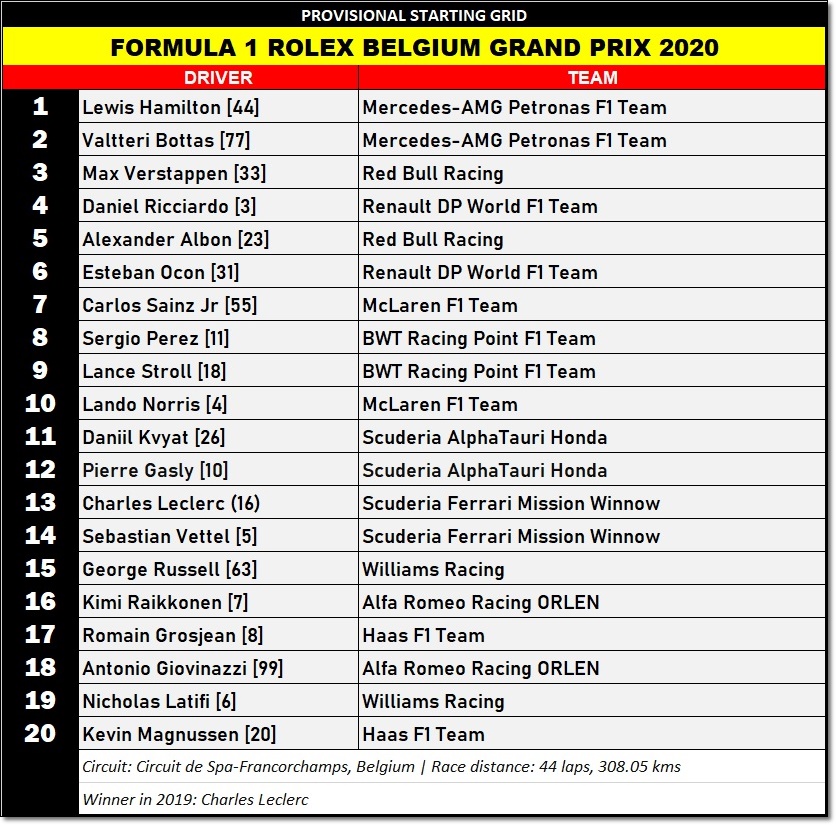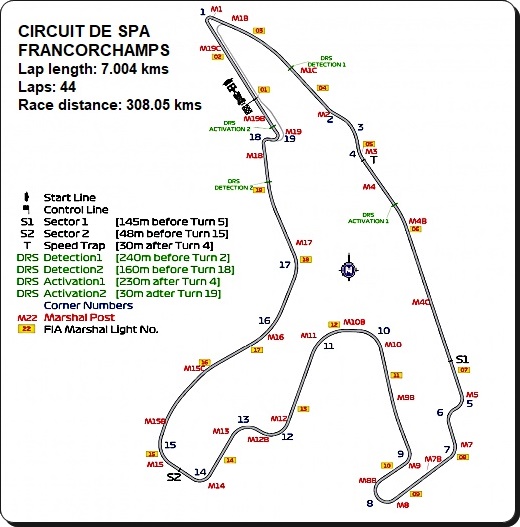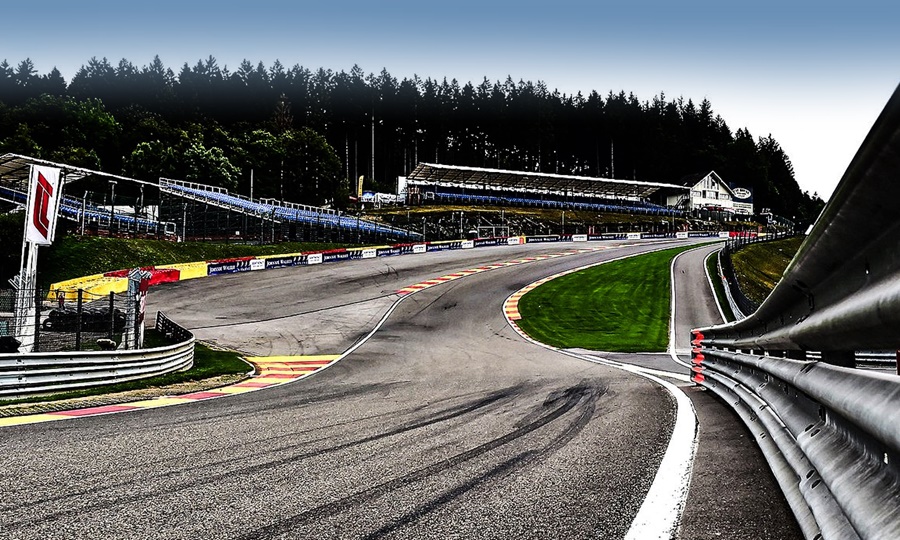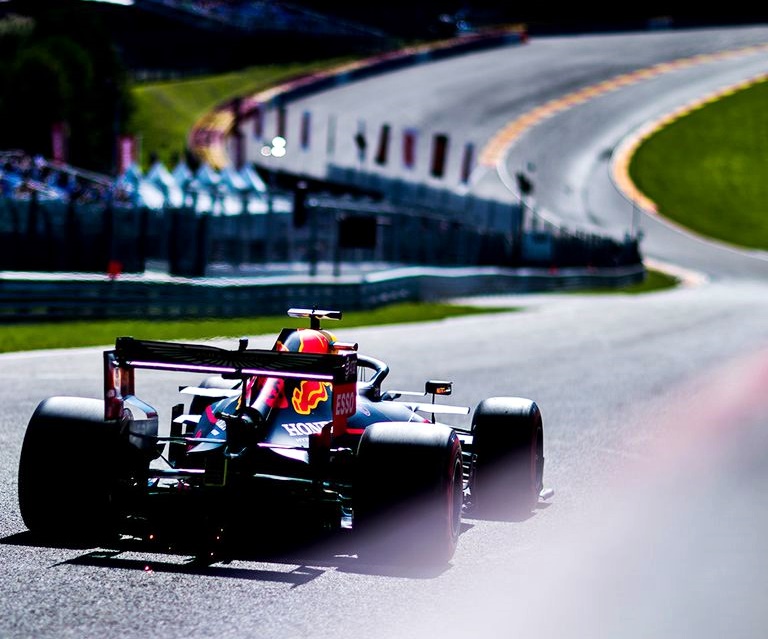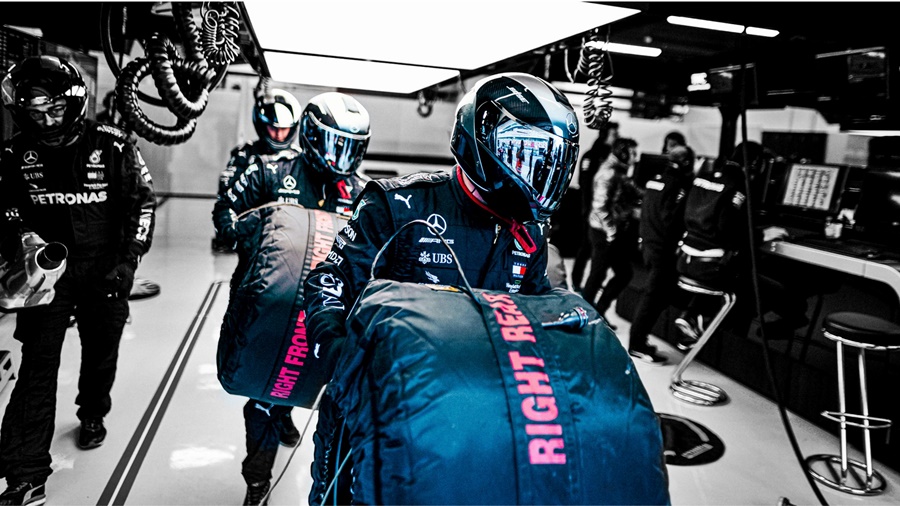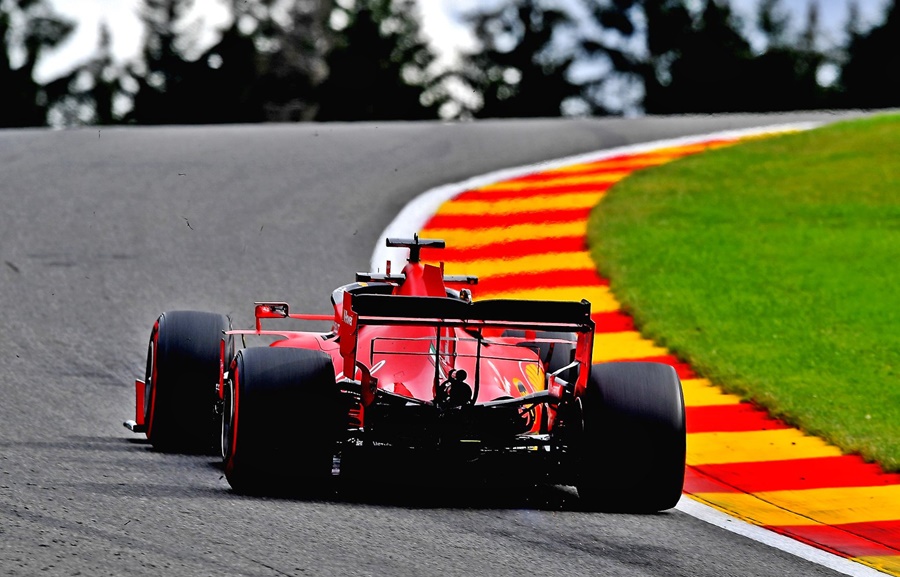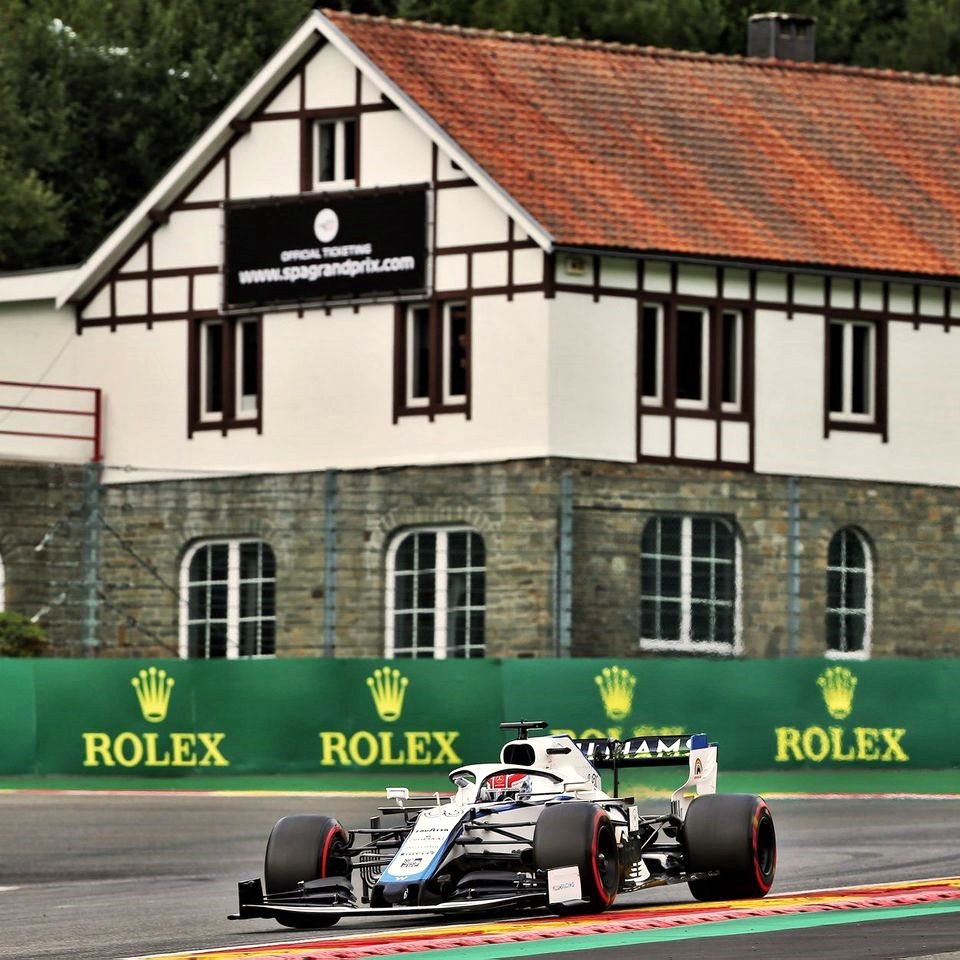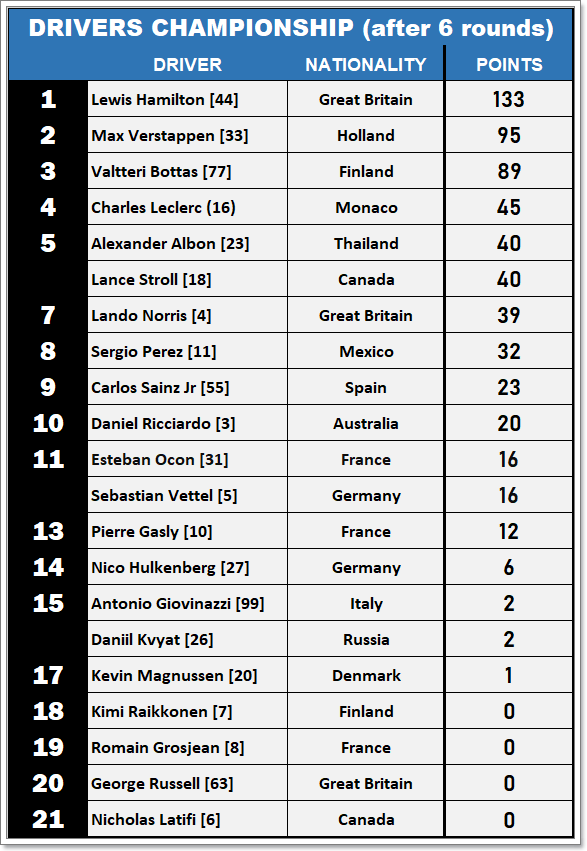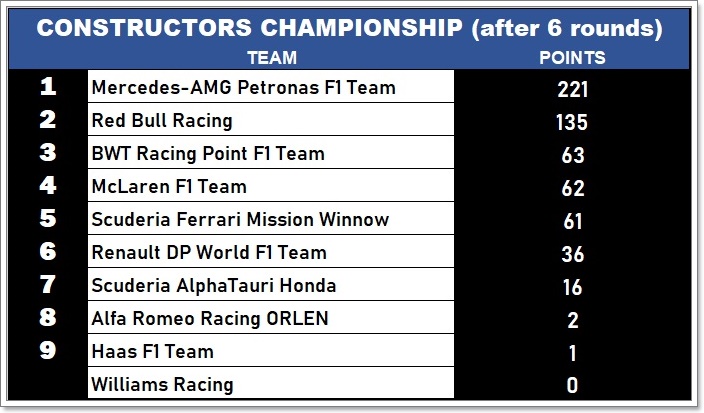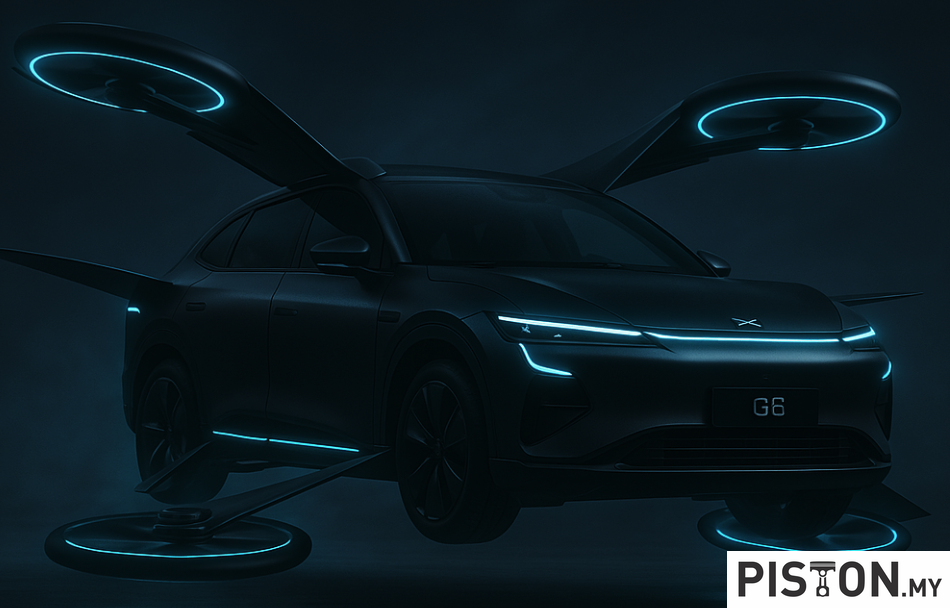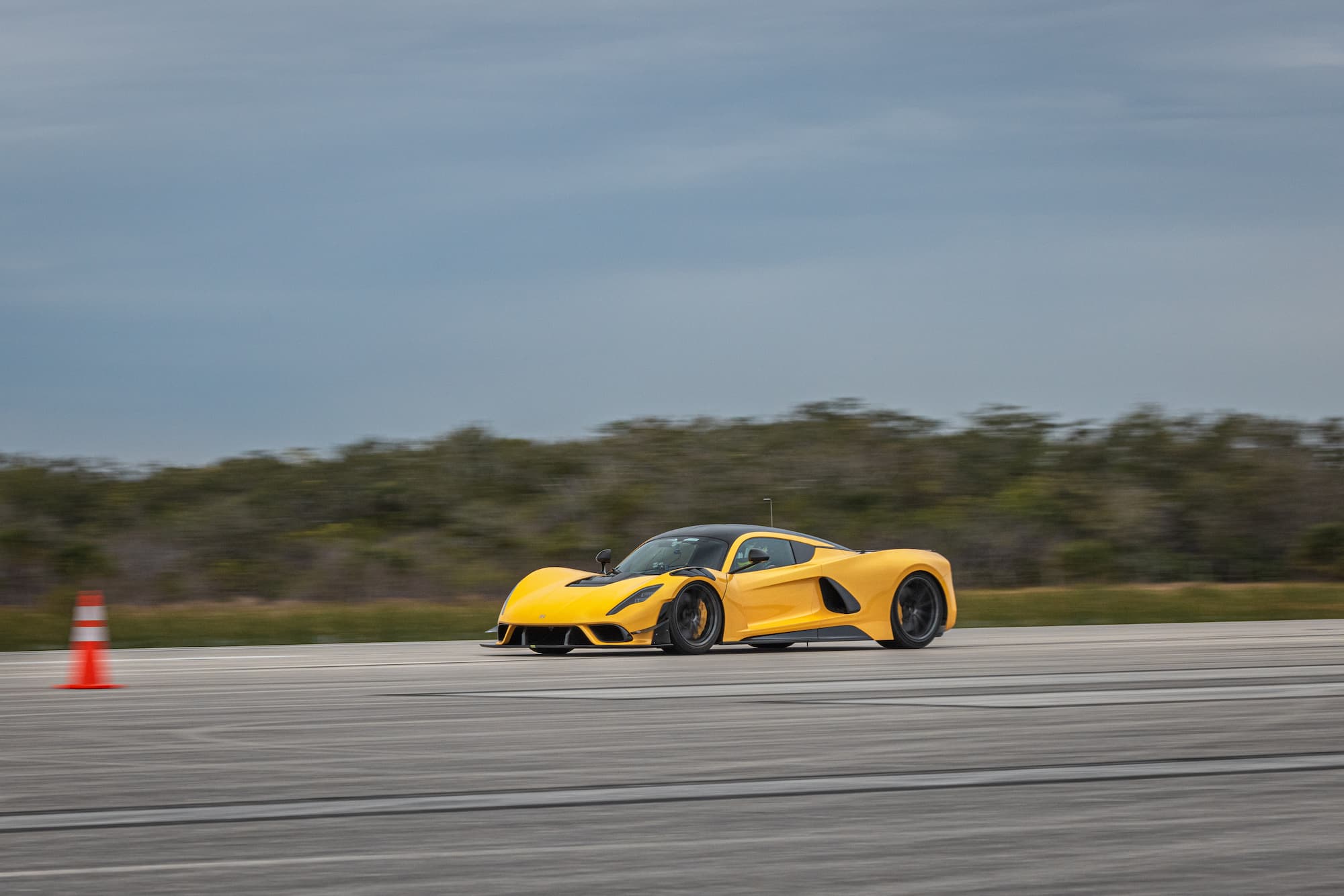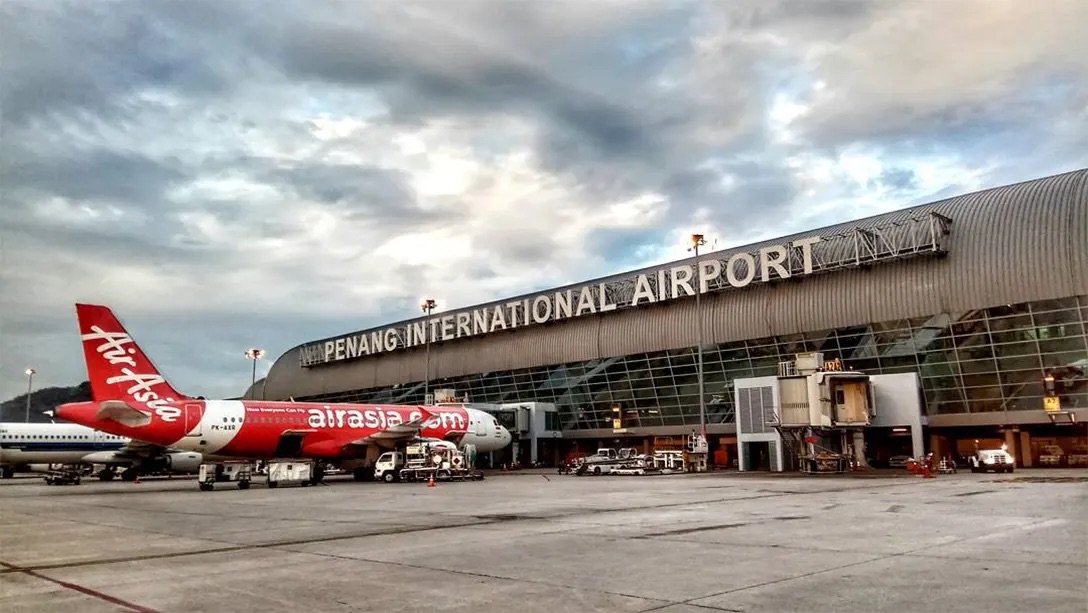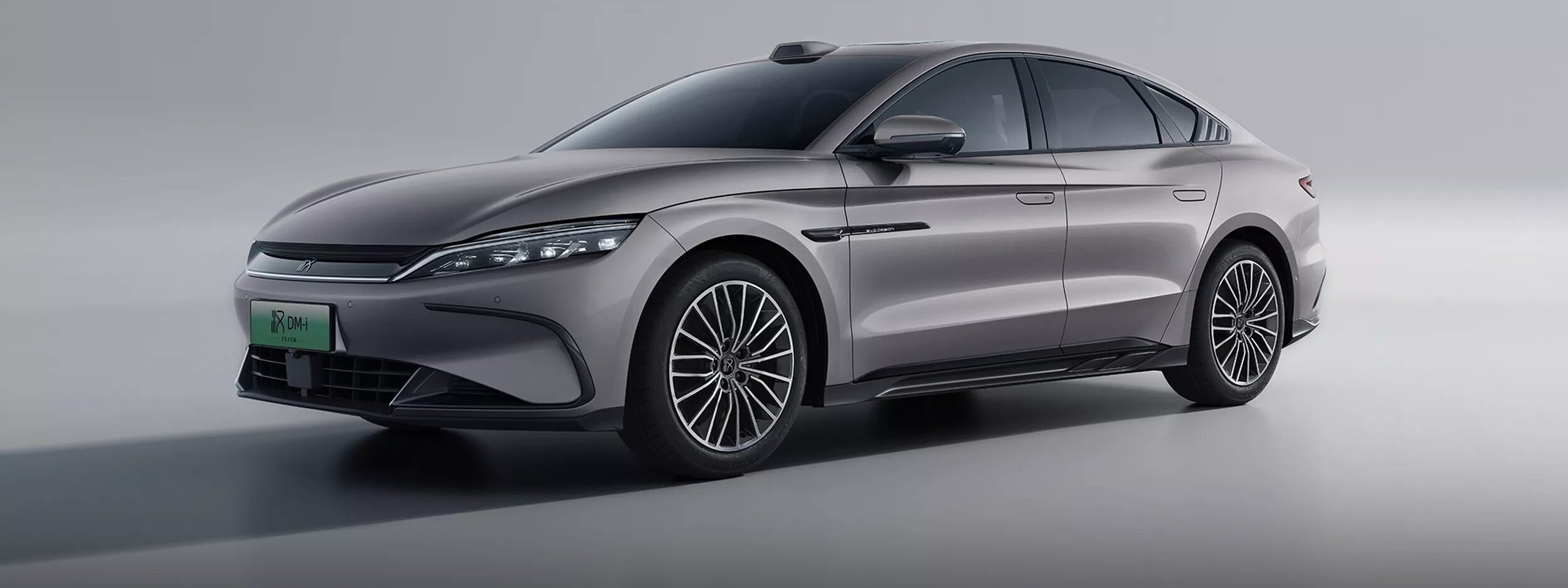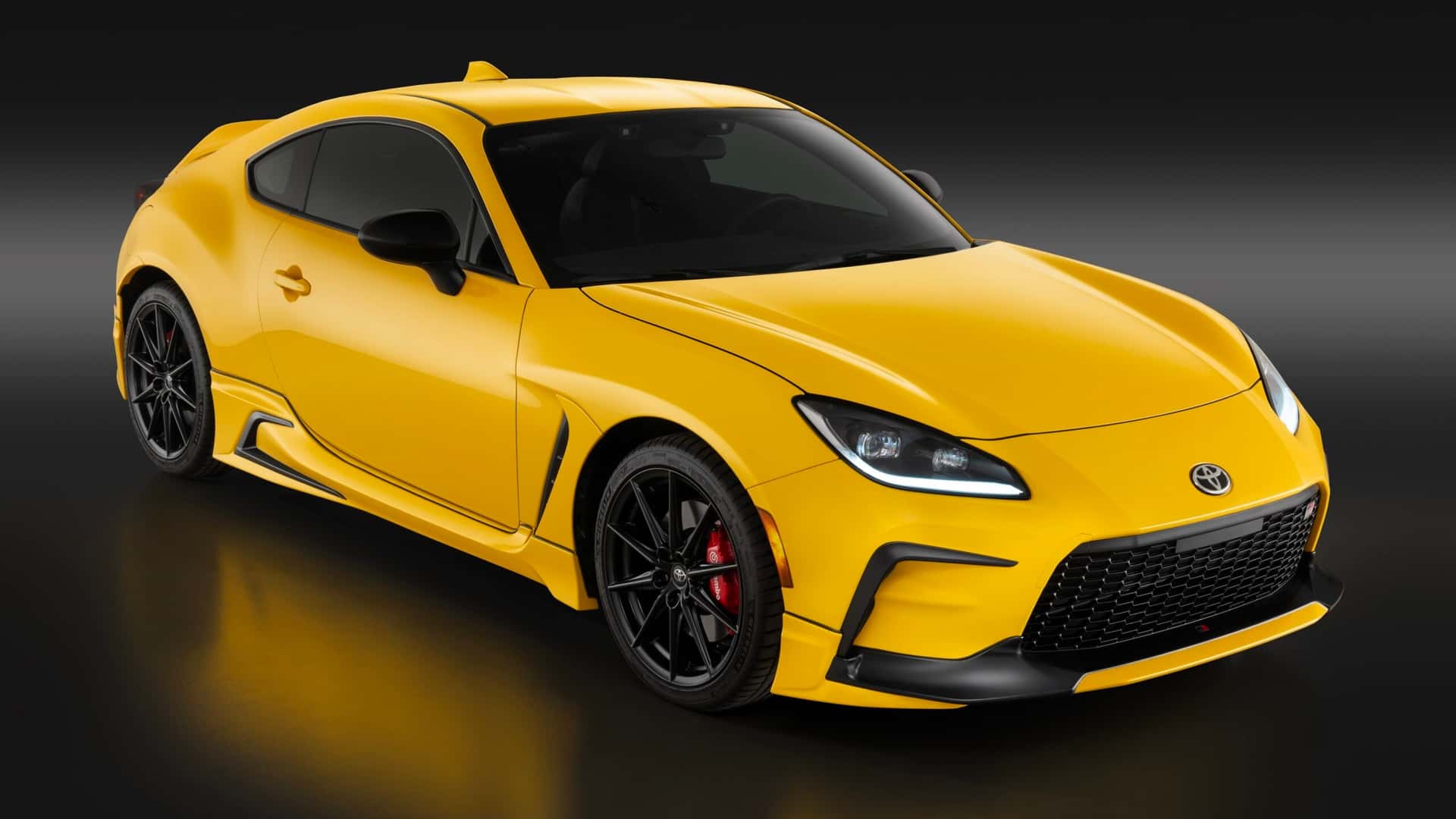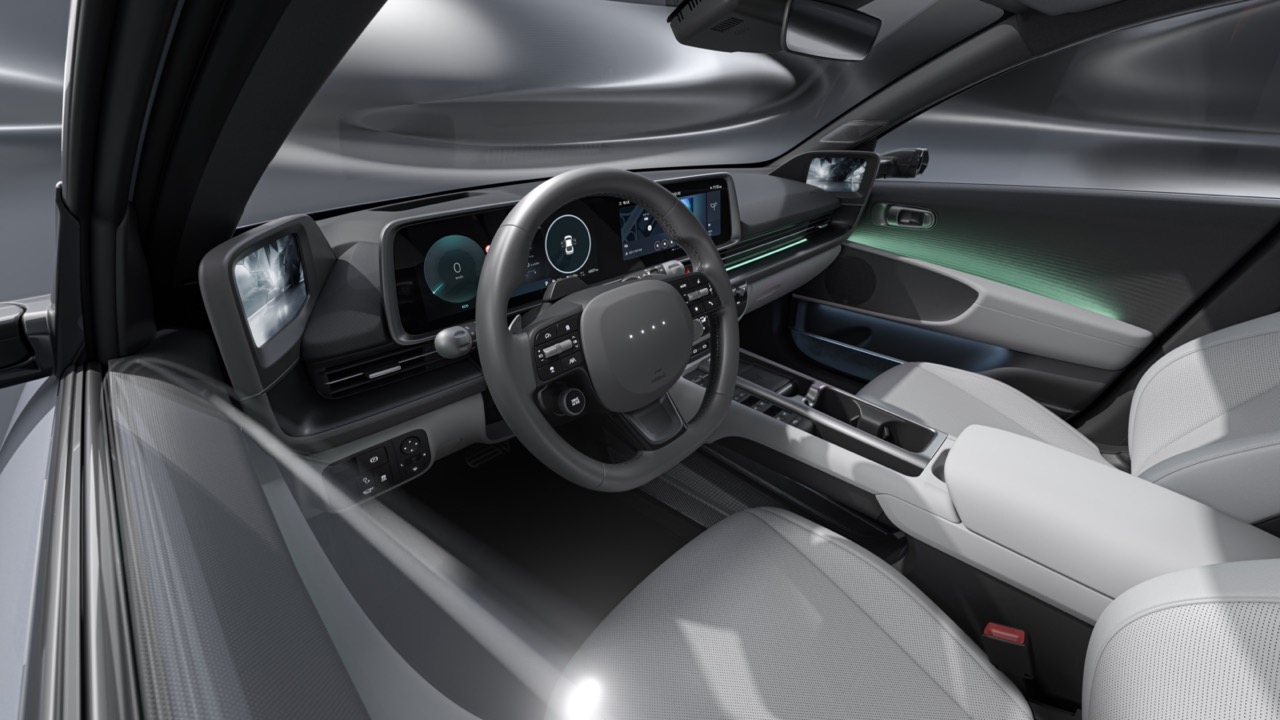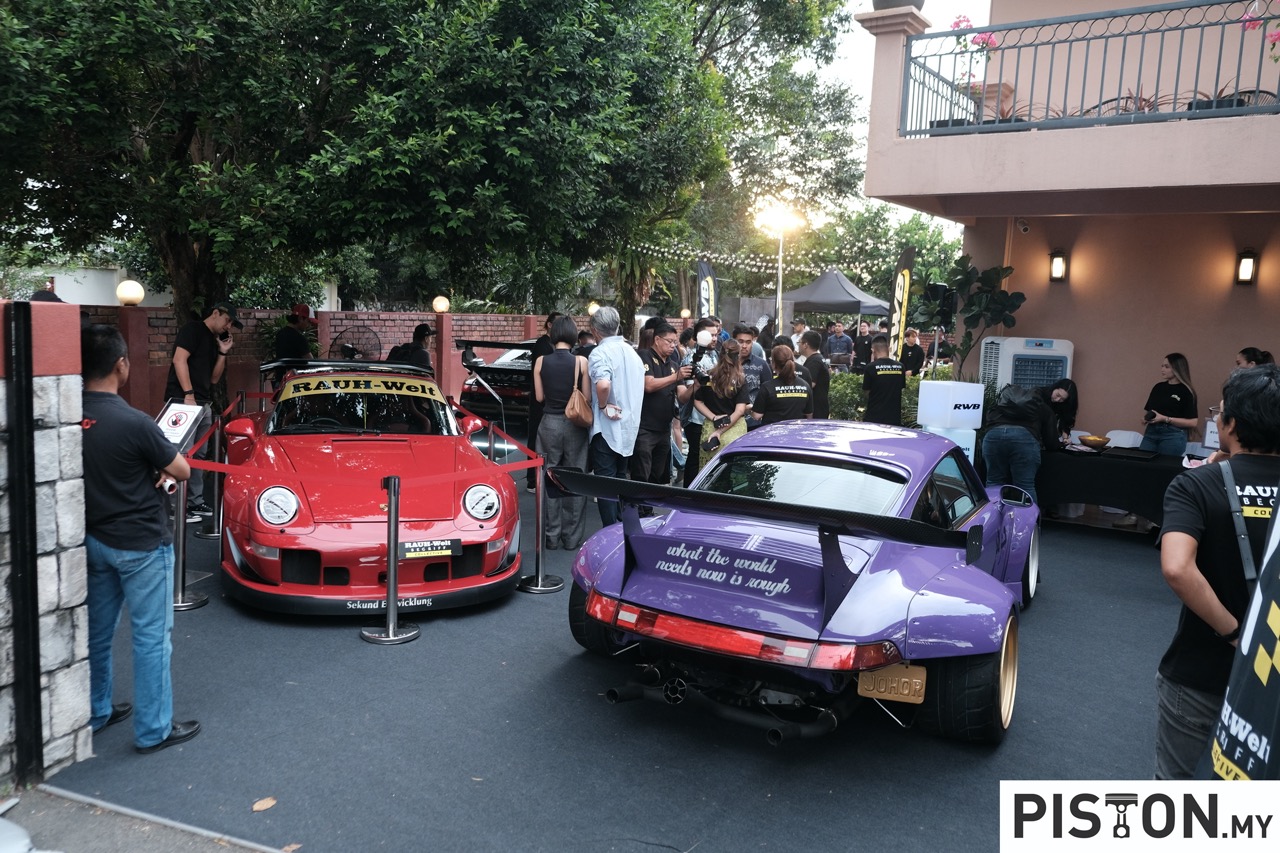Race starts at 3:10 pm in Belgium/9:10 pm in Malaysia
After one weekend break, the 2020 Formula 1 World Championship begins its second three-in-a-row rounds with Round 7 at the historical Circuit de Spa-Francorchamps for the Belgium Grand Prix. The event is the 65th F1 World Championship round hosted by Belgium and is one of the original races from the 1950s season. However, the F1 races were not always held at Spa-Francorchamps and on 11 occasions, they were held at two other circuits.
The 7-km track with 19 turns is therefore familiar to the drivers and teams, with its outstanding features and characteristics leading to some interesting set-up decisions. The two long full-throttle sections of the first and third sectors require low drag – but the longer intricate middle sector, where much of the lap time is made or lost, makes for a complicated choice of downforce levels. If too high, the car cannot attack or defend on the long straights; too low and too much time is lost in the middle of the lap. Each team will therefore have different strategies and it is always interesting see which one proves suitable.
Spa-Francorchamps is F1’s longest track with a lap distance of 7.004 kilometres. This tops the second circuit on the list, Baku (6.003 kms), by just over one kilometre. Because of its long lap distance, the Belgium GP has the lowest number of race laps in F1 with only 44 – making for a race distance of 308.05 kms. Also at this track, the drivers experience up to 5.2g (at Turn 10), which is the highest lateral g-force of the season.
Longest lap, few gear changes
Interestingly, despite having the longest lap in F1, the drivers only change gear 38 times for each circulation of Spa, one of the lowest figures in F1. This is particularly low when compared to the busy laps of Monaco where drivers will change gears around 50 times per lap – and that street track is less than half the length of Spa.
The main reason for the relatively low number of gear changes per lap is that a large portion of the lap at Spa is covered in top gear. Additionally, most of the corners that require gear changes come in groups – for example, Turn 5 to Turn 7. Over the length of the entire 7.004 kilometres of lap distance, there are only 6 sets of gear changes required.
Prompted by a 2019 race in which no driver used the C1 tyre and seven of the ten points-scoring cars ran a one-stop strategy, Pirelli has brought a compound one notch down for this weekend’s racing, with the C2, C3 and C4 available to the teams.
Fresh engines installed
Another potential factor at this race is the use of fresh engines. The announcement of an extended calendar earlier this week takes the projected number of races up to 17 (originally 22) which is above the threshold that allowed competitors to use a third ICE, TC or MGU-H. Spa has traditionally been a race where teams install a new power unit anyway, and so this weekend may see a slight shift in running, especially in the ultra-tight midfield.
The championship positions
Lewis Hamilton continues to enjoy a commanding lead at the top of the Driver’ Championship table with 132 points. Behind him is Red Bull’s Max Verstappen who has 95 points after having taken 5 5 consecutive podium finishes. He is ahead of Valtteri Bottas who started the season well but now finds himself slipping and has so far collected only 89 points.
Once again, Mercedes-AMG is in a strong leading position in the Constructors’ Championship with 221 points. That’s 86 points ahead of Red Bull Racing. The teams to watch are Racing Point, McLaren and Ferrari: Racing Point has 63 points, just one point ahead of McLaren and two ahead of Ferrari.
Past winners
Michael Schumacher has had the most number of wins at the Belgium GP -2 with Benetton and 4 with Ferrari. The Ferrari team has had the most victories, 18 in all, which is 4 ahead of McLaren.




